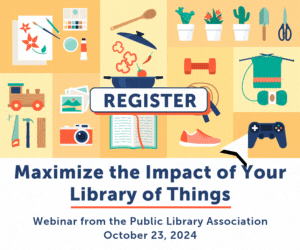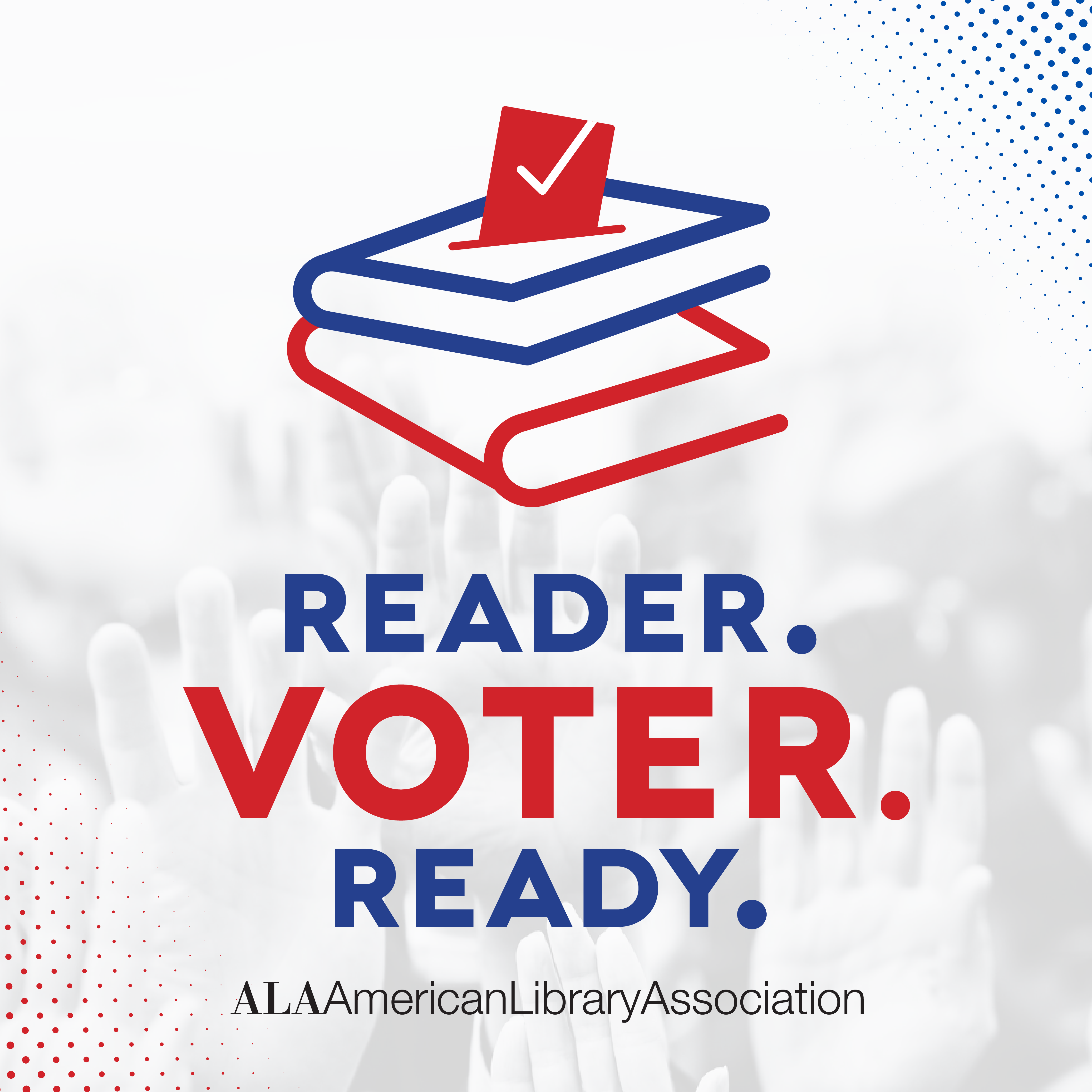PAWS for Reading: North Carolina Libraries Go to the Dogs
Why would you want a Paws for Reading program in your library, you might ask? Hickory (N.C.) Public Library (HPL) has had a Paws for Reading program since 2006. That summer the theme for its summer reading program was Paws to Read, featuring the popular Ike LaRue series of children’s books by Mark Teague. When a volunteer with two reading-dog rottweilers approached HPL about starting the program, it quickly became popular at both the main Patrick Beaver Memorial Library and the Ridgeview Branch. Reading dogs sit beside a young library patron, reluctant reader or otherwise, and “listen” as the child reads to the captive canine audience. Youngsters who do not like reading out loud in a classroom or other public setting will often eagerly read to a nonjudgmental pooch.
HPL Director Mary Sizemore’s own dog Lucy, an affable mixed breed, is one of the most popular reader dogs. While Lucy’s main library role is being a reader dog, she has been involved with her library in a variety of other ways. Lucy recently went to the state capital in Raleigh for Library Legislative Day, marches in the Christmas parade, and now has her own Facebook page.1
Nancy Brown, youth services librarian at HPL’s Ridgeview Branch, explained that readers sign up for thirty-minute appoint- ments with a Paws for Reading dog. Volunteer teams (handlers and their dogs) do two sessions a week, one at each site. First- time readers get a dog tag or wristband and a bookmark that says “Paw-some Reader!” Meg Sandner, who works in the children’s department, said that some of the young readers don’t even re- ally need help with their reading skills but simply like the inter- action with the dogs because they don’t have pets themselves. Sizemore’s dog Lucy is as likely to get a kiss or a cuddle as she is a reading session.
Other Reading-Dog Programs in N.C.
Union County Public Library in Monroe has a Paws reading program called Paws-itive Reading, where youngsters can sign up to read to Obi or Dusty for fifteen-minute sessions.
The Charlotte Mecklenburg Library has several reading-dog programs at a variety of locations. Their Davidson location pro- vides Paws to Read certified therapy reading dogs for both elementary and preschool youngsters. Mint Hill Branch offers Paws Awhile to Read, with fifteen-minute sign-up slots for kids ages five to eleven.
A mother in Union County whose son participated in a reading-dog program had this to say:
I am an aggressive reader, so my son has a little of that in him. I will say that for the days when he doesn’t feel like being the brilliant boy that he is, no matter what he will . . . read to the dogs. When we started, we were reading to Eli. I remember one Saturday after baseball my son was so tired, but wanted to come to the library anyway to read. He started reading to Eli and ended up asleep on Eli’s pillow. Eli being such a gentleman [dog], just moved over and let him finish his nap. We now read to Maggie and Brandy. We alternate between the two but say hello to both when here. He sees these dogs more as friends that he has to explain a book to. He starts reading and ends up giving his own ideas about the story.2
How Reading-Dog Programs Began
The first formal reading-dog program, Reading Education Assistance Dogs (R.E.A.D.), began in late 1999 when the Salt Lake City Public Library began offering “Dog Day Afternoons” to kids ages four to eleven featuring six dogs. Sandi Martin, a critical care nurse and board member of Intermountain Therapy Animals, originat- ed the program, which brought certified therapy dogs into the public library who had previously worked in hospital rehab programs. The program quickly expanded to area elementary schools and can now be found in schools and libraries nation-wide.
Why Reading-Dog Programs?
One of the first reading-dog programs to be conducted in a school setting began in March 2000 at Bennion Elementary in Salt Lake City. The ten children who participated in that pilot program benefitted enor- mously. Their scores in reading and other subjects improved, as did their school at- tendance, confidence, and self-esteem. Since the initial programs in public librar- ies and schools in Utah, reading-dog pro- grams have spread like wildfire, and it’s easy to understand why. They are a great deal of fun for everyone involved, and they pay important dividends for struggling students.3
The Carolina Canines for Therapy program also reports an impressive success rate: 83 percent of the approximately 500 children participating in its school and li- brary programs in Hanover, Duplin, and Brunswick counties have seen their reading skills improve.4 Other research has demonstrated that pet therapy can help children to stay focused and motivated.5 It has been proven particularly effective for those students who are reluctant readers.6 Another interesting and significant finding has to do with the ability of dogs to ease the anxiety that can accompany reading, especially for kids who are struggling to develop fluency. One study that recorded children’s anxiety levels as they read to a therapy dog, a peer, and an adult deter- mined that children were clearly the most relaxed – as indicated by their behavior as well as their blood pressure and pulse – when reading to a therapy dog.7
The Paws for Reading program brings dogs like Sunny, a gentle collie, and his owner/handler, into school and public libraries, where they settle in and make themselves comfy, listening as excited children practice their reading by sharing a story with a new friend.8 At the La Mesa Branch of San Diego County (Calif.) Library, Sunny has been read to in English, Spanish, French, and Italian. Does he understand all these languages? Of course he does, at least according to the excited children who are reading to him. In a similar program at the LaGrange Association Library in Poughkeepsie, New York, called “Thursdays with MacGyver,” children take turns reading to a German shorthaired pointer. According to one young participant, MacGyver is a fantastic listener, responding to her reading by making noises or changing positions depending on what happens in the story.9
Where Do I Start?
Since reading-dog programs can help improve children’s reading skills as well as revolutionize their relationship with the act of reading, it is not surprising that many public libraries are eager to host these programs. If you are considering welcoming reading dogs and their handlers into your library, one of the first things you’ll need to decide is whether you want to create your own program or affiliate yourself with an established model such as Paws for Reading or Bonding Ani- mals, Reading, Kids, & Safety (B.A.R.K.S.), which will ensure that your pet therapy teams are not only trained and insured but have received additional training specific to literacy instruction.
If you decide to create your own read- ing dog program, you will want to begin by locating a therapy team that is registered with a nationally recognized pet therapy association, such as Therapy Dogs International, the Delta Society, or Therapy Dogs Inc. If a therapy team is registered with one of these organizations, you can be sure that they have had appropriate training in pet therapy and that they have liability insurance through their sponsoring organization. Sometimes, however, librarians don’t even have to go out looking; volunteers simply show up on the library doorstep. See Spot Read in Wake County, North Carolina, for example, was founded in 2008 by Rebecca Hircshfield when she and her dog Freddie, having just completed pet therapy training, were searching for a place to put their newly acquired talents to good use. Now some fifty therapy teams make regular visits to county libraries and schools in the program.
Carolina Canines for Therapy (CCT) brings the R.E.A.D. program to North Carolina through its Canines for Literacy program. Each Canines for Literacy team (a dog and his or her handler) must first complete twelve hours of CCT training, after which they shadow an already trained team and then undertake a four-hour R.E.A.D. course.10 The R.E.A.D. course teaches handlers to use the dogs to help children work on their reading-comprehension skills. A handler might ask a child to explain certain words to the dog, for example, or, after finishing a book, to retell the story in his or her own words so the dog can hear it again. Regarding reading instruction, handlers are trained to use their best judgment in helping to select books appropriate to each child’s reading level and in deciding when to provide the reader with a little help when struggling with a new or difficult word. R.E.A.D. training emphasizes nurturing each child’s reading practice with supportive and engaging interactions designed to improve the child’s reading as well as to encourage a more positive attitude toward the reading process.11
B.A.R.K.S. is another reading dog program advertised for “children and adults of all skill levels,” developed by Helping Paws International.12 Like Paws for Reading teams, B.A.R.K.S. teams must have therapy animal certification as well as additional literacy training. B.A.R.K.S. was started in 2001-02 by Helping Paws member Amy Parsons, school psychologist at Durham County (N.C.) Elementary School, and her dog Beamer. The B.A.R.K.S. program is similar to the R.E.A.D. program because Parsons collaborated with Inter-Mountain Therapy Animals as they were developing R.E.A.D. In an interesting twist on the reading partnership idea, children who participate in B.A.R.K.S. are told that they are not just going to be reading to the dogs, they are going to help the dogs to learn to read! The B.A.R.K.S. website reports that one of the newest techniques in training assistance-service dogs is teaching them to read up to 25-30 words or more and for them to be able to understand those words in short written sentences.13
Tips for Success
Here are some tips for a successful reading-dog program:
- If you are devising your own reading-dog program, make sure your therapy teams are registered with a national organization, and consider having library staff provide the teams with some additional instruction in reading facilitation.
- Make sure that handlers always remain with their dogs – the dog and handler are considered a team.
- Make sure that your therapy team has current liability insurance.
- Have participants register for time slots of fifteen to thirty minutes. This will help prevent having disappointed children if times runs out.
- Have staff members help children pick out an appropriate book before their reading sessions.
- Locate the therapy team in an out-of-the-way spot so that the reading is not constantly interrupted by curious dog lovers.
- Consider offering incentives for consistent participation (Paws for Reading and B.A.R.K.S. programs incorporate this into their
- To view Lucy’s Facebook page, visit www.facebook.com/people/Lucy-Sizemore/100002178909634, accessed July 11, 2011.
- Esmay Walker, e-mail communication with the author, Feb. 25, 2011.
- More recent data that clearly illustrate the power of therapy dogs on students’ reading and confidence levels, accessed July 27, 2011.
- Carolina Canines for Therapy “Paws for READing” homepage, accessed Feb. 11, 2011.
- Ben P. Granger et al., “A Human- Animal Intervention Team Approach to Animal-Assisted Therapy,” Anthrozoös 11, no. 3 (1998): 172-76.
- Michael Kaufmann, “Creature Comforts: Animal-Assisted Activities in Education and Therapy,” Reaching Today’s Youth: The Community Circle of Caring Journal 1, no. 2 (1997): 27-31.
- Erika Friedman et al., “Companion Animals and Human Health: Physical and Cardiovascular Influences,” in Companion Animals and Us: Exploring the Relationships Between People and Pets, Anthony Pudberscek et al., eds. (New York: Cambridge, 2000): 125-42.
- Anna Hartman, “Good Dog. Sit. Listen,” American Libraries 4, no. 8 (Aug. 2010): 13.
- Alison Francis, “Thursdays with MacGyver: The Benefits of a Library Therapy Dog,” Children and Libraries 7, no. 2 (Summer/Fall 2009): 50-52.
- Carolina Canines for Therapy “Paws for READing” homepage.
- To find out more about Paws for Reading in North Carolina and the R.E.A.D. program, visit www.carolinacanines.org/Paws_for _Reading.html and www.therapy animals.org/R.E.A.D.html, both accessed July 11, 2011.
- Helping Paws International, Bonding Animals, Reading, Kids, & Safety (B.A.R.K.S.) website, accessed Feb. 11, 2011.
- Ibid.
Tags: reading dogs









